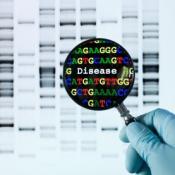Human Molecular Genetics and Genomics — Important Advances and Exciting Possibilities
By Francis S. Collins, M.D., Ph.D., Jennifer A. Doudna, Ph.D., Eric S. Lander, Ph.D., and Charles N. Rotimi, Ph.D.,
The New England Journal of Medicine
| 01. 07. 2021
The breathtaking progress in molecular genetics that has occurred over the past five decades and the transition to genomic medicine would have been difficult to imagine in 1970, when the Institute of Medicine (IOM), now the National Academy of Medicine (NAM), was formed. The term “genomics” hadn’t yet been coined, the tools and technologies that are the foundation of modern biotechnology were in their infancy, and methods for sequencing even a few nucleotides were barely workable.1
The IOM’s early years coincided with paradigm-shifting discoveries related to DNA, as biologic research swiftly incorporated Boyer and Cohen’s recombinant method, Sanger’s DNA-sequencing work, and Mullis’s introduction of polymerase chain reaction (PCR) technology (see timeline). Yet even against this backdrop, the notion of a “big science” endeavor to sequence the human genome seemed radical.
In 1987, the New York Times Magazine characterized the Human Genome Project as the “biggest, costliest, most provocative biomedical research project in history.”2 But in the years between the project’s launch in 1990 and its completion in 2003, genomic technology advanced dramatically. DNA-sequencing throughput increased from 1000...
Related Articles
By Kevin Davies , Genetic Engineering and Biotechnology News | 10.22.2024
By Isaac Schultz, Gizmodo | 10.18.2024
Colossal Biosciences, a company mainly known for intending to genetically engineer proxies for several iconic extinct species, announced this week that it has made major steps towards the de-extinction of the thylacine, or Tasmanian tiger.
The thylacine was a carnivorous...
By Claudia López Lloreda, Undark Magazine | 10.02.2024
WHEN Andres Moreno-Estrada began studying genetics back in the early 2000s, the high cost of sequencing DNA was the biggest barrier to understanding the role of genes in human health and disease. But with time, the problems shifted.
“Technology is no...
By Jocelyn Kaiser , Science | 10.09.2024
Rare and fatal, the genetic disease known as cerebral adrenoleukodystrophy (ALD) devastates the brain in young boys. A mutation on the X chromosome leads to a buildup of fats that damage the insulation around nerve cells, leading to seizures, blindness...




